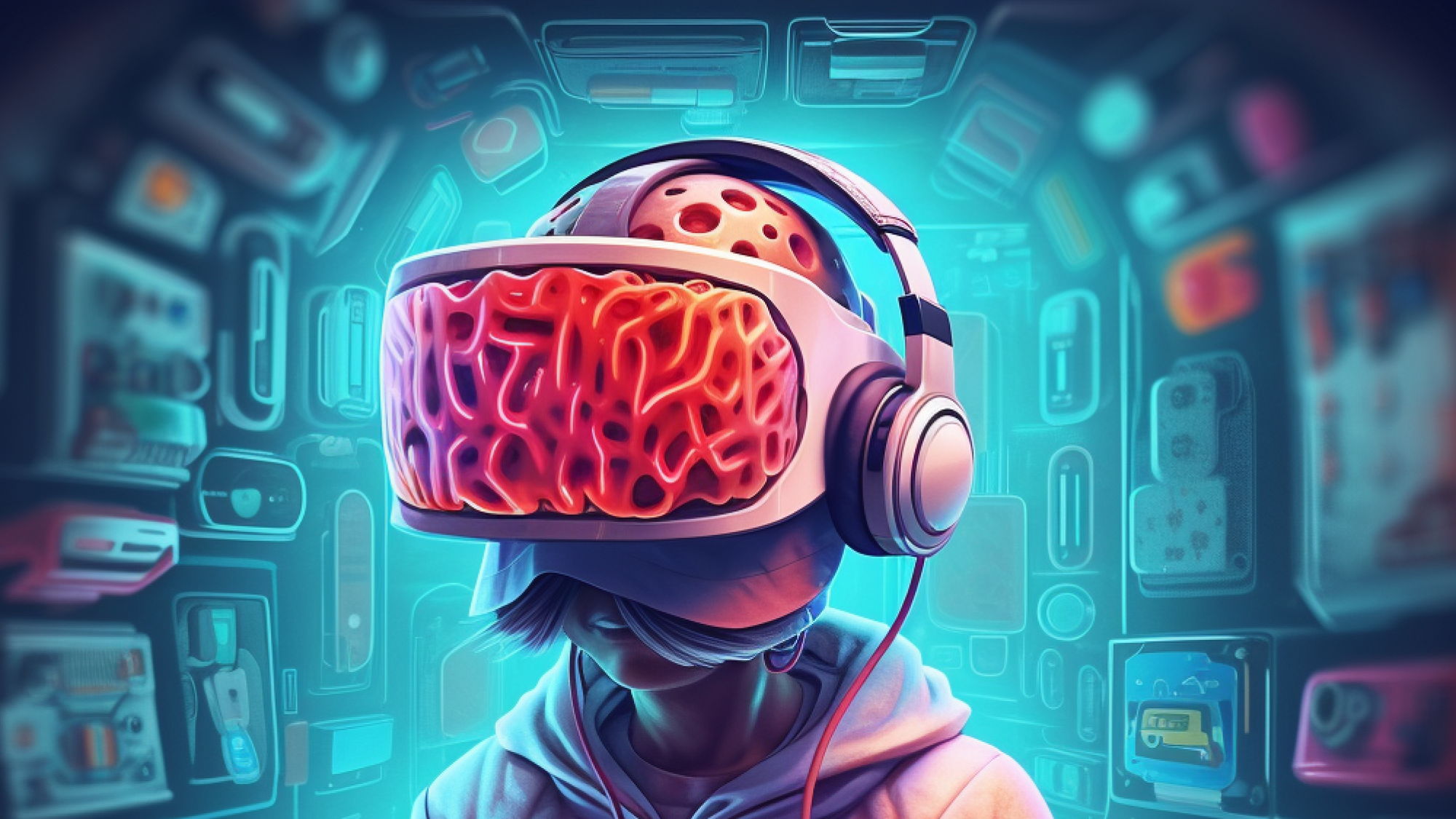
Virtual reality (VR) is coming.
And it could revolutionize the way we interact with technology in the near future.
VR will create immersive and interactive environments that simulate real-world experiences — applied to every facet of our daily lives, from games, entertainment, education, training, therapy, and beyond.
As VR becomes increasingly popular, it’s time to think about how this technology will affect our brains and behavior.
Virtual reality and the brain
Our brain generates perceptions, emotions, and actions.
VR allows you to manipulate the sensory inputs of our brain, and we end up perceiving the virtual as real, triggering genuine emotional and cognitive responses.
Studies have shown that harnessing the power of VR does have the potential to enhance spatial learning and memory consolidation.
For example, in one study, they found participants were able to learn 80 foreign words in two phonetically similar languages in VR contexts, with improved one-week retention. Although these results were primarily evident when participants learned the languages each in its own unique context, and more ‘real-like’ environments.
In another study by PLOS ONE, they got a group of older adults and ran them through two types of exercise training: one that was through virtual reality and another via conventional treadmill training. The results demonstrated that both forms of training help to improve physical and cognitive effects, ultimately benefiting from either or.
Additionally, one study leveraged virtual reality to assist rehabilitation in brain health of the elderly with mild cognitive impairment. They got a group of these older adults to go through VR cognitive training and normal cognitive training over a period of 12 weeks.
The results showed that while both types improved executive function, the group that received the VR training had significant improvements in global cognition, verbal memory, and instrumental activities of daily living.
The behavioral response to virtual reality
It’s definitely possible to trigger emotional responses in virtual environments.
For example, studies have shown that VR can trigger feelings like fear, joy, and empathy. In virtual environments, you can manipulate visual and auditory cues to evoke a feeling. That’s how the amygdala gets activated.
One way that VR is being used in relation to emotion is treating anxiety disorders, including exposure therapy or Virtual Reality Therapy Treat (VRET), which gives individuals a controlled and safe setting so they can face their fears.
Through VRET, patients can learn to become desensitized to anxiety-provoking stimuli, exposing the patients to triggers and stressors that elicit fear. Beyond just phobias, research is already being conducted on using VR to treat social anxiety disorder in teens and young adults.
As Dr. Lauren Hoffman, assistant professor of medical psychology notes,
“We are excited about the potential of virtual reality-based therapy to improve social skills and ease the distress that teens and young adults encounter daily. We look forward to seeing VR reach young people who might not otherwise have access to evidence-based treatment.”
Researchers have shown that virtual reality can improve social behaviors such as emotional empathy.
In addition to behavioral therapies, VR has been used to treat addiction, eating disorders, autism spectrum disorder, and many others.
The challenges and considerations of VR
Before we get too excited about the potential benefits of VR, there are a definitely a few things to consider when it comes to the technology, especially its potential concerns on behavior.
- Ethical concerns — A growing ethical concern about VR is its potential for deception, manipulation, and exploitation, especially the more advanced and realistic it becomes. Soon enough, we’ll have VR programs that are so realistic, it’ll be hard to distinguish it from reality, and this can induce emotional distress or create false memories. This raises questions about its impact on mental health and well-being.
- Health concerns — Using VR for prolonged periods may also cause discomfort, from motion sickness to eye strain. We’re already become quite sedentary from the emergence of the Internet and smart phones. So with VR, this sedentary lifestyle may only worsen, and as such, it’s important to consider the greater health concerns of immersing ourselves too much into a virtual world.
- Privacy and data security — Just like how there are countless privacy concerns with data sharing from the Internet right now, with virtual reality, we add another layer of data being tracked — from users’ movements, behaviors, eye-tracking, and physiological responses. This data will all inevitably be collected through VR experiences, so protecting users’ personal information and ensuring data security is crucial.
- Accessibility and inclusivity — Inclusion and accessibility should be built into VR technology so that it’s accessible to everyone, even people with disabilities. In order to make VR experiences accessible to everyone, you need to consider things like physical and cognitive accessibility. If VR is a highly visual medium, you would be secluding a large population of users that are blind — so the question remains, how do we design with accessibility in mind?
Final thoughts
While virtual reality has a lot of advantages, there’s still a lot to learn about how it affects your brain and behavior. Considering that we are now entering a world where VR will be mainstream for consumers, only time can tell on VR’s long lasting effects on brain and behavior.










